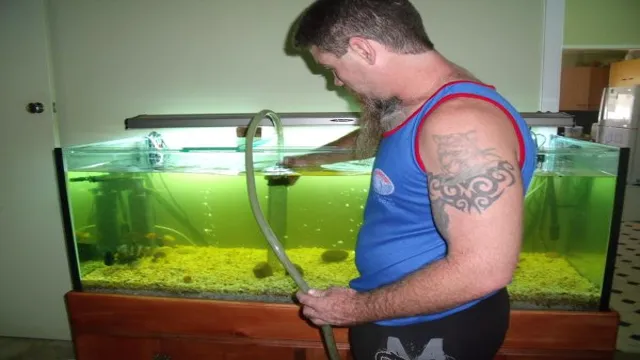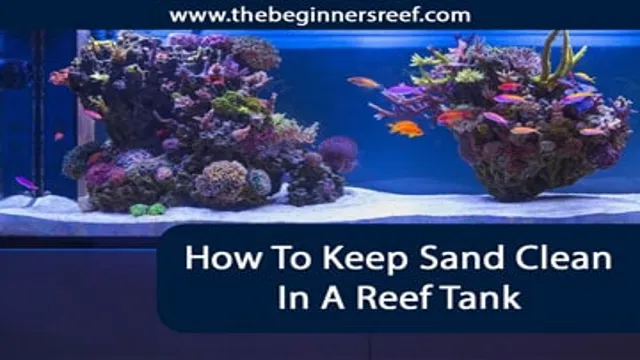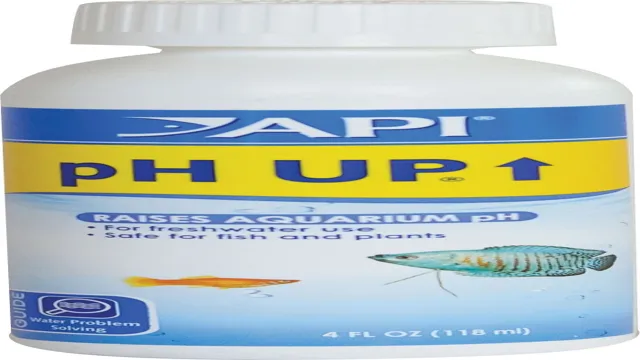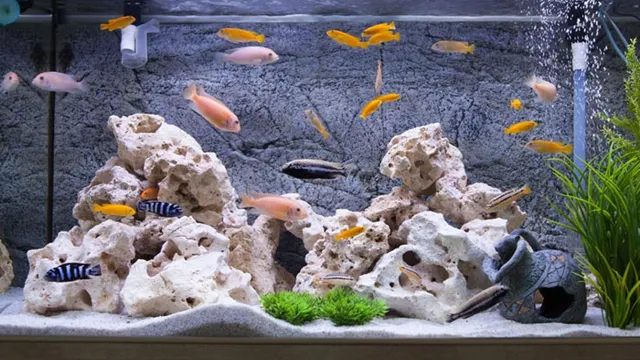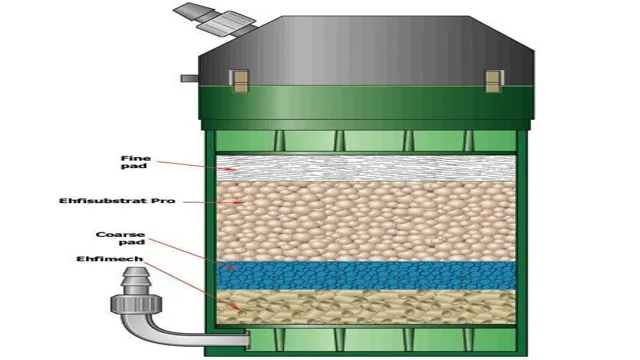If you’re a new aquarium owner, or maybe just prefer smaller aquariums, then you know that keeping your tank clean is crucial to the health and well-being of your fishy friends. It can be tempting to let cleaning slip by the wayside, but that can lead to a buildup of harmful bacteria and toxins that can harm your fish and even kill them. Plus, a dirty tank simply isn’t pleasant to look at.
So, what’s the best way to keep your small aquarium clean and healthy? In this blog, we’ll go over some tips and tricks to help you maintain a beautiful and thriving aquatic environment.
Why Should You Clean Your Aquariums?
Keeping your aquarium clean is crucial for the health and well-being of your fish and other aquatic creatures. However, it can be a daunting task, especially if you don’t want to change the water. But fear not, there’s a way to clean your small aquarium without changing the water.
First, remove any debris, including uneaten food, dead plants, and other litter that can accumulate on the bottom. Second, use a gravel vacuum to suck out any waste materials trapped in the substrate. Finally, wipe down the walls and decorations with a clean cloth to remove any algae buildup.
By following these steps regularly, you can maintain a healthy and clean aquarium without the need to change the water. Remember, a clean aquarium is essential for healthy aquatic life and can be achieved with just a few simple steps.
Maintain a Healthy Environment
Maintaining a healthy environment in your aquarium is crucial for the well-being of your aquatic pets. The water in your tank can easily become contaminated with fish waste, uneaten food, and other debris, leading to ammonia buildup and poor water quality. This can cause stress and disease in your fish and other aquatic creatures.
By cleaning your aquarium regularly, you can keep the water conditions in check and ensure that your fish stay healthy and happy. Not only does cleaning your aquarium benefit your aquatic pets, but it also makes for a more visually appealing display. A dirty and cluttered tank can detract from the beauty of your fish and plants.
So take the time to clean your aquarium and keep it in top condition – your fish and your eyes will thank you!

Prevent Algae Growth
Aquariums can be beautiful additions to your home or office, featuring colorful fish and vibrant plant life. However, without regular cleaning and maintenance, your aquarium can become a breeding ground for unsightly and potentially harmful algae growth. Algae thrives in environments with excess nutrients, such as uneaten fish food and waste, which can negatively impact the health of your aquatic inhabitants.
By cleaning your aquarium regularly, you can prevent the growth of algae and ensure the health and happiness of your fish and plants. Don’t let your aquarium become a slimy mess – take the time to clean it properly and enjoy a beautiful, thriving aquatic ecosystem.
Tools You Will Need
When it comes to cleaning a small aquarium, you don’t necessarily have to change the water all the time. However, you will need some tools to make the process easier and more effective. First and foremost, you will need a good quality scrub brush to clean the interior walls of the tank.
Make sure it has soft bristles to avoid scratching the glass. Secondly, invest in a siphon gravel cleaner to remove any debris or waste that has accumulated on the bottom of the tank. This tool will not only help keep your aquarium clean, but it will also aerate the water.
Additionally, a algae magnet scraper will come in handy when it comes to removing algae buildup on the tank walls. Lastly, don’t forget to use a water conditioner to neutralize any chlorine or harmful chemicals in your tap water before adding it to the tank. By having these tools on hand, you can maintain a healthy and happy environment for your aquatic pets.
With the right tools and regular maintenance, your small aquarium will look and smell fresh without having to change the water all the time. (See Also: How to Grow Fish Faster in Aquarium: Tips and Tricks for Quick Growth)
Net or Gravel Cleaner
If you’re looking to keep your aquarium clean and healthy, it’s essential to have the right tools on hand. Two of the most important tools you’ll need are a net and a gravel cleaner. A net is essential for removing any debris or leftover food from your tank, as well as for capturing and removing fish for cleaning or transfer.
A gravel cleaner, on the other hand, is great for removing any excess waste and debris that has accumulated on the bottom of your tank. Not only will this help to keep your water clean, but it will also improve the overall health and well-being of your fish. When selecting your gravel cleaner, look for one that’s the appropriate size for your tank, as well as one that has a self-priming mechanism for easy operation.
With these two important tools, you’ll be able to maintain a clean and healthy aquarium for your fish to thrive in.
Scrubber or Brush
When it comes to cleaning your home, it’s essential to have the right tools for the job. Depending on the type of surface you’re cleaning, you may need a scrubber or a brush. Scrubbers are ideal for tough, stubborn stains that require extra elbow grease to remove.
These tools come in various sizes and shapes, from handheld scrubbers to larger ones that attach to a cleaning device. On the other hand, brushes are perfect for lighter cleaning tasks, such as removing dust and dirt. Brushes come in different shapes and sizes, from bristle brushes to soft, fluffy ones for delicate surfaces.
Ultimately, the tool you use will depend on the job at hand. Whether you need a scrubber or a brush, remember to choose one that is appropriate for the surface you’re cleaning, and don’t forget to wear gloves to protect your hands. So, gather all the best tools and start cleaning!
Algae Magnet or Blade
When it comes to cleaning your aquarium, the two most popular tools are algae magnets and blades. An algae magnet is a simple but effective tool that uses the power of magnets to clean the glass walls of the aquarium. On the other hand, a blade is a more heavy-duty option that can be used to scrape off tougher algae.
To effectively clean your tank, you will need both. The algae magnet is great for daily or weekly maintenance, while the blade can be used for a deep clean every couple of months. Make sure to use the algae magnet carefully, as it can scratch the glass if used incorrectly.
With the right tools and proper care, your aquarium can stay clean and healthy for your fish and aquatic plants. So, whether you’re a seasoned aquarium owner or a beginner, having both an algae magnet and blade in your cleaning arsenal is a must.
Step-by-Step Guide
Cleaning a small aquarium without changing the water can be a daunting task, but it can be done efficiently with a few simple steps. First, remove any debris from the surface of the water using a small net or a siphon. Then, clean the walls of your tank with a soft sponge or scraper specifically designed for aquariums.
Be sure to avoid any harsh cleaning substances that may harm your fish or plants. Next, clean out your aquarium filter by removing any excess debris or buildup. This can be done using a brush or by rinsing it in warm water.
Lastly, perform a partial water change by removing up to 25% of the water in your tank and replacing it with fresh, clean water. This will help to maintain the overall health of your aquarium and its inhabitants. By following these simple steps, you can keep your small aquarium clean and healthy without having to completely change the water every time.
Remove Excess Food and Debris
When it comes to keeping your home clean and hygienic, ensuring that your kitchen is clutter-free is crucial. One of the first steps to maintaining a clean kitchen is by removing excess food and debris that accumulates over time. Start by sorting out any items that have expired or are no longer needed. (See Also: How to Get Rid of Planaria Worms in Aquarium: A Comprehensive Guide for a Healthy Tank)
Next, remove any food crumbs or debris on your counters, stovetop, and floors. Use a damp towel or sponge to wipe down surfaces and get rid of any tough stains. For larger debris, use a dustpan and brush to sweep it up and dispose of it in the trash can.
By taking the time to remove excess food and debris, you’ll have a clean and organized kitchen in no time. Remember to keep up with this task regularly to maintain a tidy space. Your kitchen will thank you!
Clean the Gravel or Substrate
When it comes to maintaining a healthy and clean aquarium, cleaning the substrate or gravel is an essential step. Over time, debris, uneaten food, and waste can accumulate in the substrate, leading to poor water quality and potential harm to fish or other aquatic creatures. To ensure your aquarium stays in optimal condition, it’s important to clean the substrate regularly.
Here’s a step-by-step guide to help you get started. Firstly, use a gravel vacuum or siphon to remove any debris or waste. Then, take a small net and scoop out any larger debris that may have been missed.
Be sure to avoid disturbing the substrate too much to prevent any harmful bacteria from being released into the water. After removing all debris, take a clean bucket and fill it with aquarium water. Place a small amount of substrate into the bucket and use your hand to stir it around, allowing any dust or debris to rise to the surface.
Pour the water out, being careful not to lose any of the substrate. Repeat this process until you have cleaned all of the substrate in the aquarium. By following these steps, you can maintain a healthy and clean substrate, ensuring your aquatic friends stay happy and healthy.
Scrub the Walls and Decorations
Scrubbing the walls and decorations is an essential part of any deep cleaning process for your home. It’s quite amazing how much dirt, dust, and grime can build up on your walls and decorations over time. Therefore, it’s crucial to give them a good scrub.
Here’s a step-by-step guide on how to clean your walls and decorations effectively. First, clear the area around the walls and decorations to avoid any damage to your furniture. Then, dust the walls and decorations using a microfiber cloth.
Next, prepare a solution of warm water and mild detergent or a non-toxic cleaning agent. Dip a soft sponge into the solution and wring it until it’s damp. Gently scrub the walls and decorations in a circular motion, paying close attention to any stubborn stains.
Lastly, rinse the walls and decorations with clean water, allowing them to air dry. That’s it! It’s that simple to keep your walls and decorations looking clean and fresh. Don’t forget to use a non-abrasive sponge and avoid using harsh chemicals or abrasive scrubs to prevent damage to your walls and decorations.
Happy scrubbing!
Remove Algae with Magnet or Blade
Algae is a common problem experienced by pond owners that can quickly take over and leave the water looking unsightly. One effective way to remove algae is by using a magnet or blade, but knowing how to do it correctly is crucial. Firstly, it’s essential to identify what type of algae is present, as some species cannot be removed by a magnet or blade.
Once you’ve established that a magnet or blade is the best solution, start by skimming the surface of the pond with the magnet or blade, removing as much as possible. It’s vital to avoid damaging any plants or marine life. Next, use a pond net to collect the algae that you’ve loosened and remove it from the water. (See Also: How to Care for Snails in a Freshwater Aquarium: Expert Tips for Happy and Healthy Gastropods)
It may take several attempts to remove all the algae, so be patient and persistent with the process. While a magnet or blade may be effective, it’s essential to address the underlying cause of the algae growth for long-term solution. This could include ensuring proper filtration, reducing nutrients in the pond, and increasing shade to limit sunlight exposure.
By following these steps, pond owners can successfully remove algae and maintain a healthy and aesthetically pleasing water environment.
Conclusion
In conclusion, cleaning a small aquarium without changing water isn’t rocket science – it’s actually quite a simple process, provided you have the right tools and know-how. With some well-placed scrubbing, a siphon, and a bit of elbow grease, you can keep your small aquatic haven looking spick and span without having to worry about changing the water every time. So why not roll up your sleeves and give it a go? Your fish will thank you (even if they can’t say it aloud).
FAQs
Can I clean my small aquarium without changing the water?
Yes, it is possible to clean a small aquarium without changing the water by using a gravel vacuum and wiping down the sides of the tank.
How often should I clean my small aquarium?
It is recommended to clean a small aquarium every two weeks, but it ultimately depends on the amount of fish and how much they are fed.
What is the best way to remove algae from a small aquarium?
The best way to remove algae from a small aquarium is to use an algae scraper or pad and manually clean the affected areas.
Can I use soap to clean my small aquarium?
No, soap should never be used to clean a small aquarium as it can harm the fish and disrupt the natural balance of the tank.
How do I clean the filter in my small aquarium?
The filter in a small aquarium can be cleaned by removing the filter media and rinsing it in fish tank water, not tap water.
Should I remove my fish while cleaning my small aquarium?
It is not necessary to remove fish while cleaning a small aquarium, but it may be helpful to temporarily relocate them to a separate tank or container.
How can I keep my small aquarium clean for longer periods of time?
Regular maintenance such as water changes and cleaning can keep a small aquarium clean for longer periods of time. Additionally, avoiding overfeeding and overcrowding can help maintain a clean and healthy environment for the fish.

